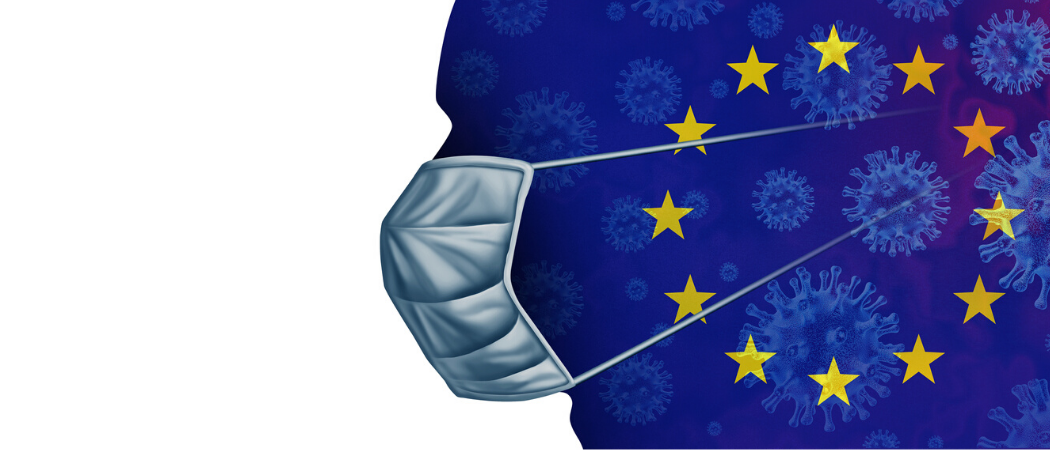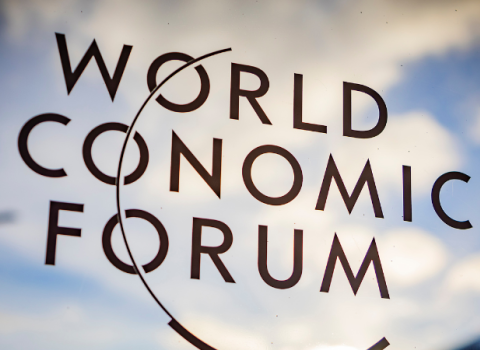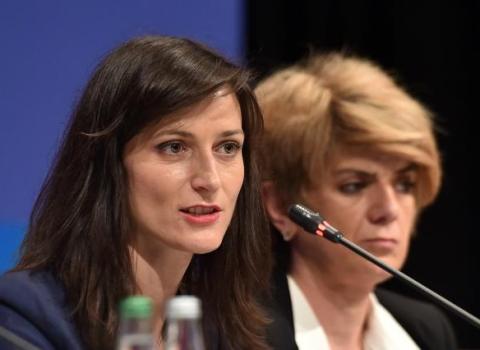Scientists, economists and political advisers discuss problems with tests, how to use contact-tracing apps, and finding a convincing role for the EU to play as lockdown measures are lifted

European governments this week began navigating the delicate course of easing lockdown measures and rebooting economic activity without sparking a flare in COVID-19 infections.
On Wednesday, the European Commission presented a route map for its 27 members, which are each planning their own exit strategies. Chief among its recommendations is for a large data and blood sample gathering regime, to enable tracing and quarantining of anyone who has COVID-19 and everyone they have been in contact with, while also slowly allowing those who are free from it to go back to some activities.
“Economists are often criticised for putting the economy ahead of health. This being said, a recession can be detrimental for the health of certain people,” said Mathias Dewatripont, a former vice-governor of the National Bank of Belgium, who is part of a group advising the Belgian government on exiting its lockdown.
The great pause brought on by COVID-19 means industrial accidents in Europe are down, along with car accidents and pollution. “But confinement is no fun for a big chunk of the population. Saying that, we have to make sure we don’t [re-enter normal life] too quickly. We have health service capacity, and if we go beyond it, deaths can be multiplied five to 10 times,” said Dewatripont, debating the issue with other economists, advisers, scientists and an EU commissioner via videoconference on Thursday.
Finding the right balance is evidently a difficult task for governments, which were warned by the International Monetary Fund this week that the world is heading for a steep recession unparalleled in modern times.
The great COVID-19 shutdown could bring about a secondary health crisis, said Carol Propper, professor of economics at Imperial Business School, London. “A recession the size of the financial crisis again would lead to a 20 per cent increase in chronic health patients,” she said.
But any return to normal life – or whatever constitutes normal following the pandemic – will be cautious and step-by-step, Dewatripont said. Several countries in Europe, including Italy, Spain, Austria,Denmark and the Czech Republic, have begun loosening restrictions.
“Clearly, seniors should be protected longer. Business-to-business should maybe go back online before business-to-customer,” he said.
Schools are a harder call – “on the one hand, it’s more difficult to enforce social distancing in schools, but then young students are less at risk. Unless they live with older people,” Dewatripont said.
Any business or school that reopens is likely to look very different from before COVID, with radically changed setups involving small groups, facemasks and social distancing rules.
Testing conditions
No exit strategy can work without a huge ramp up in testing capacity, the experts agreed.
“There are now more than 70 companies producing [COVID-19] tests. Our main task is to scale-up production. Even if they get these tests validated, their production can be a challenge,” said Michel Goldman, co-director of the Institute for Interdisciplinary Innovation in Healthcare and former head of the Innovative Medicines Initiative (IMI), the EU partnership with pharma companies on drug discovery. “And there is [intense] competition between countries to get these tests.”
Antibody tests to find out who has been infected with COVID-19 are essential for understanding the epidemiology and knowing who has immunity. While there is a global effort to develop these tests, it has proved difficult because of cross reactivity with other members of the coronavirus family. To date there is no test that is sensitive enough for use in wide scale testing
The science on how protective antibodies against COVID-19 are is also hazy at this point. “Some people that have been infected have not developed antibodies. So it’s not granted you’ll get [immunity] with exposure to the virus,” said Goldman.
In short, we need to keep measuring, said Michel Kazatchkine, a senior fellow at the Graduate Institute for International and Development Studies in Geneva.
“We have a scientific unknown, which is how much antibodies are needed for protection,” said Kazatchkine, who is a former executive director of the Global Fund to Fight AIDS, Tuberculosis and Malaria. “You need bedside tests that everyone can use.” Getting hold of antibody tests saw an early scrum among governments in Europe, leading to the purchase of testing kits from China that were not sensitive enough.
Based on data he has studied, Kazatchkine reckons that in certain countries, “somewhere around 5-15 per cent of the population”, has developed immunity.
Another requirement to safely lifting lockdown measures is to have low cost and effective ways of tracing people who may be infected by COVID-19, so they can be quarantined, said Kazatchkine.
Helga Nowotny, former president of the European Research Council, said she has a contact tracing app on her smartphone, which alerts users if they have been in contact with affected persons.
“The crisis will not be over in one month or two months. We can learn to live with it if we adopt precautions,” she said.
According to a study published by scientists at Edinburgh University this week, 80 per cent of the population would be needed in order for the technology to be effective. Nowotny said the challenge will be to get such a high number to sign up voluntarily.
Ideally, we’ll get to the point where citizens are demanding these apps, said Goldman. “It’s about ownership. At the end of the day, we have to make our populations pandemic-savvy,” he said.
Finding a role for the EU
EU politicians want to see use of contact-tracing apps coordinated as much as possible between the 27 member states.
“We will have different apps but they need to be interoperable,” said European Commissioner for Justice Didier Reynders. “We also need a huge effort to protect [the security of] these apps because they’re going to be with us until the end of the year, at least.”
But with EU member states largely going their own way on dealing with the crisis, the EU has struggled to carve out a convincing role to date, a point Reynders acknowledges.
“It’s difficult to play a coordination role,” the commissioner said. “Health is a national competence, and that’s a real problem.”
Reynders says the exit plan presented on Wednesday by commission president Ursula von der Leyen had been ready to go a week earlier.
“There’s hesitation among the member states,” he said. “I’m hoping it will be possible to reinforce [EU] competencies after COVID.”
The crisis has exposed stark differences in member states’ preparedness for COVID-19. Recent research from Philippe Aghion, an economist at the College de France, for example shows how Germany had stocks of masks, protective clothing and ventilators that far outnumbered anything seen in neighbouring France.
“Germany has a much better control on supply chains and has been much more active in importing and exporting these items for years,” Aghion says.
Germany has been recognised as a model for handling COVID-19, with the country reaching nearly 120,000 testing capacity a day. As of this week, the UK was still managing less than 20,000 tests a day.
For Aghion, the crisis feeds into a recurrent debate, which is whether Brussels needs a research hub like the US Defense Advanced Research Projects Agency, to improve the pipeline of innovative ideas that can be advanced to market.
Goldman, who knows about running big EU programmes, says creating a new one is not the answer.
“There is still too much bureaucracy [in Brussels]. The European Commission is afraid of the European Court of Auditors. Creating a new agency will not change anything,” he said.
He is calling for his old organisation, IMI, to gain more independence from politicians. The agency is pumping €45 million into research to contain the outbreak.
“IMI has to go one step further. Make it more autonomous – we have to really make it more [aligned] with public and industry interests,” Goldman said.





 A unique international forum for public research organisations and companies to connect their external engagement with strategic interests around their R&D system.
A unique international forum for public research organisations and companies to connect their external engagement with strategic interests around their R&D system.